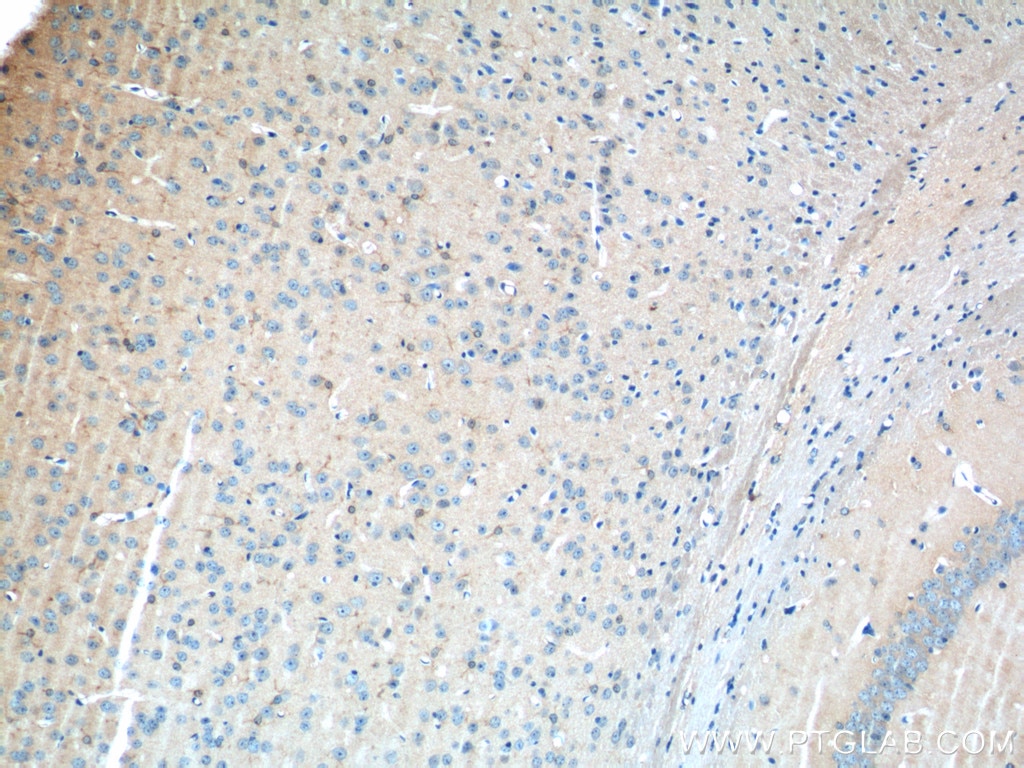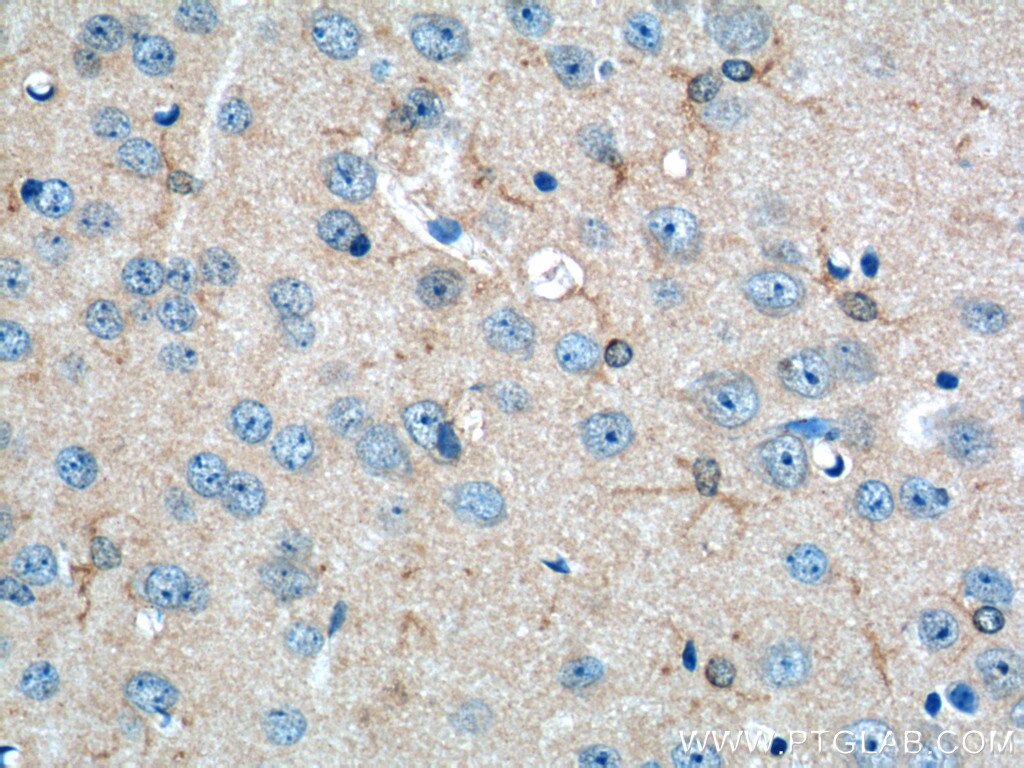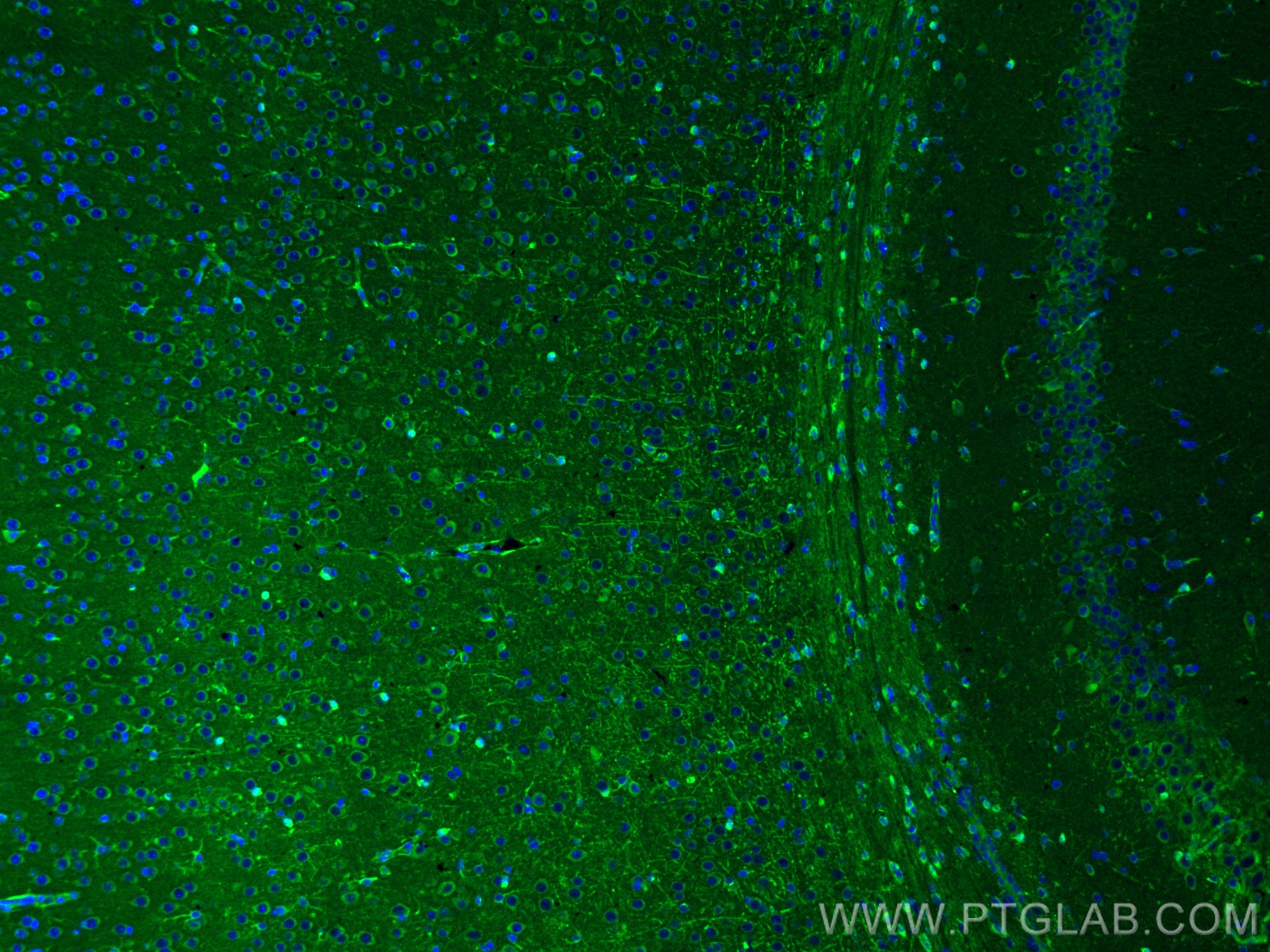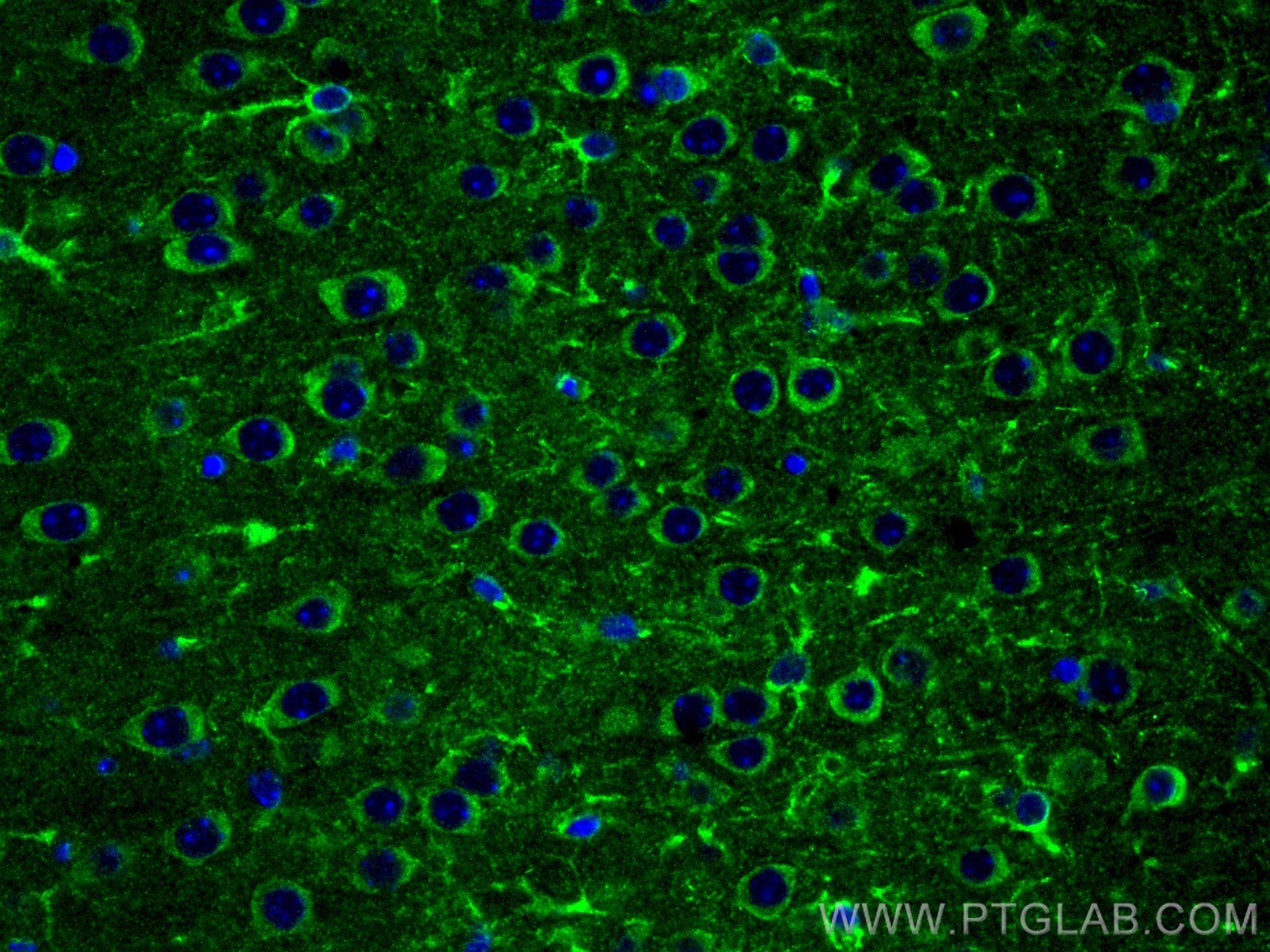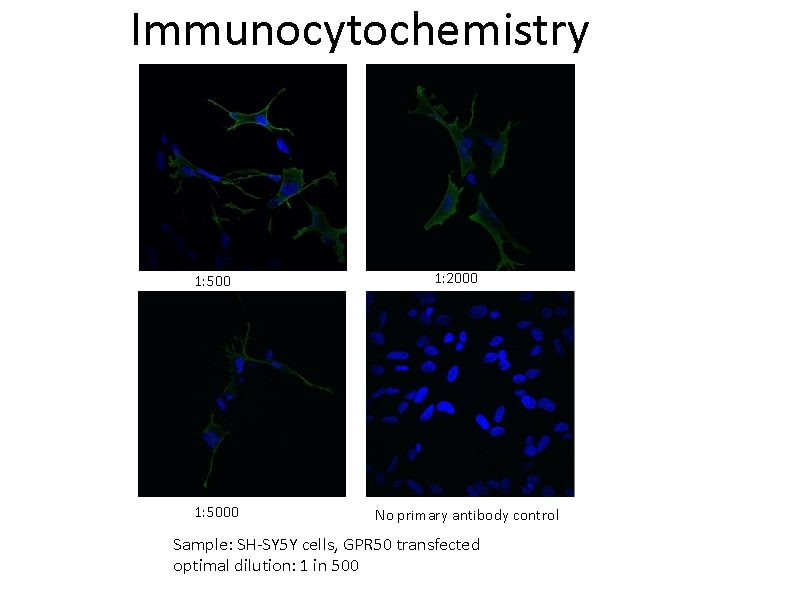- Phare
- Validé par KD/KO
Anticorps Polyclonal de lapin anti-GPR50
GPR50 Polyclonal Antibody for IHC, IF/ICC, IF-P, ELISA
Hôte / Isotype
Lapin / IgG
Réactivité testée
Humain, souris
Applications
WB, IHC, IF/ICC, IF-P, IP, ELISA
Conjugaison
Non conjugué
N° de cat : 19762-1-AP
Synonymes
Galerie de données de validation
Applications testées
| Résultats positifs en IHC | tissu cérébral de souris il est suggéré de démasquer l'antigène avec un tampon de TE buffer pH 9.0; (*) À défaut, 'le démasquage de l'antigène peut être 'effectué avec un tampon citrate pH 6,0. |
| Résultats positifs en IF-P | tissu cérébral de souris, |
| Résultats positifs en IF/ICC | cellules SH-SY5Y |
Dilution recommandée
| Application | Dilution |
|---|---|
| Immunohistochimie (IHC) | IHC : 1:20-1:200 |
| Immunofluorescence (IF)-P | IF-P : 1:50-1:500 |
| Immunofluorescence (IF)/ICC | IF/ICC : 1:100-1:500 |
| It is recommended that this reagent should be titrated in each testing system to obtain optimal results. | |
| Sample-dependent, check data in validation data gallery | |
Applications publiées
| KD/KO | See 3 publications below |
| WB | See 5 publications below |
| IHC | See 1 publications below |
| IF | See 1 publications below |
| IP | See 1 publications below |
Informations sur le produit
19762-1-AP cible GPR50 dans les applications de WB, IHC, IF/ICC, IF-P, IP, ELISA et montre une réactivité avec des échantillons Humain, souris
| Réactivité | Humain, souris |
| Réactivité citée | Humain, souris |
| Hôte / Isotype | Lapin / IgG |
| Clonalité | Polyclonal |
| Type | Anticorps |
| Immunogène | Peptide |
| Nom complet | G protein-coupled receptor 50 |
| Masse moléculaire calculée | 67 kDa |
| Numéro d’acquisition GenBank | NM_004224 |
| Symbole du gène | GPR50 |
| Identification du gène (NCBI) | 9248 |
| Conjugaison | Non conjugué |
| Forme | Liquide |
| Méthode de purification | Purification par affinité contre l'antigène |
| Tampon de stockage | PBS with 0.02% sodium azide and 50% glycerol |
| Conditions de stockage | Stocker à -20°C. Stable pendant un an après l'expédition. L'aliquotage n'est pas nécessaire pour le stockage à -20oC Les 20ul contiennent 0,1% de BSA. |
Informations générales
GPR50, also known as Melatonin-related receptor or H9, is a member of the G-protein coupled receptor 1 family. It is closely related to the G protein-coupled melatonin receptor family and has been demonstrated as the mammalian ortholog of Mel1c receptor (PMID: 8647286; 18400093). GPR50 does not bind melatonin. It is able to heterodimerize with both the MT1 (Mel1a) and MT2 (Mel1b) melatonin receptor subtypes. While GPR50 has no effect on MT2 function, GPR50 prevented MT1 from both binding melatonin and coupling to G proteins. GPR50 is involved in neuroendocrine function and plays a role in the regulation of energy metabolism (PMID: 8647286; 17957037).
Protocole
| Product Specific Protocols | |
|---|---|
| IHC protocol for GPR50 antibody 19762-1-AP | Download protocol |
| IF protocol for GPR50 antibody 19762-1-AP | Download protocol |
| Standard Protocols | |
|---|---|
| Click here to view our Standard Protocols |
Publications
| Species | Application | Title |
|---|---|---|
Nat Cell Biol Molecular identification of a BAR domain-containing coat complex for endosomal recycling of transmembrane proteins. | ||
J Cereb Blood Flow Metab Agomelatine promotes differentiation of oligodendrocyte precursor cells and preserves white matter integrity after cerebral ischemic stroke | ||
Transl Stroke Res Melatonin Offers Dual-Phase Protection to Brain Vessel Endothelial Cells in Prolonged Cerebral Ischemia-Recanalization Through Ameliorating ER Stress and Resolving Refractory Stress Granule | ||
Front Pharmacol An Improved Genetically Encoded Fluorescent cAMP Indicator for Sensitive cAMP Imaging and Fast Drug Screening.
| ||
Am J Chin Med Tetramethylpyrazine Attenuated Sevoflurane-Induced Neurotoxicity by Enhancing Autophagy through GPR50/CREB Pathway in SH-SY5Y Cells.
| ||
FEBS Open Bio Orphan receptor GPR50 attenuates inflammation and insulin signaling in 3T3-L1 preadipocytes
|
